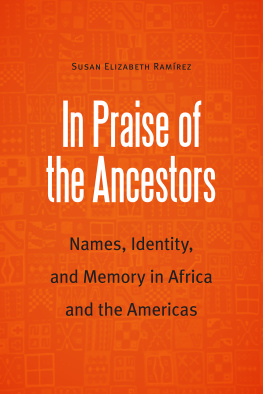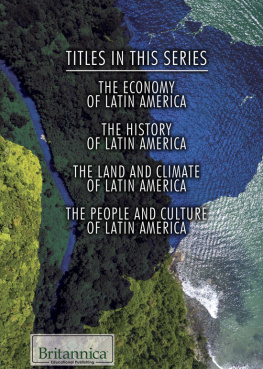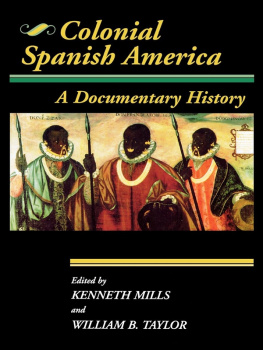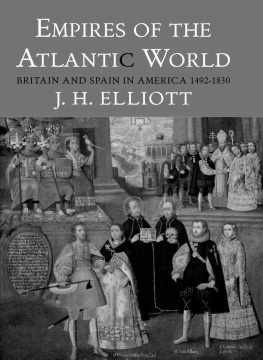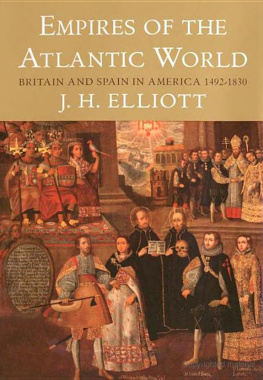A History of Colonial Latin America from First Encounters to Independence
A History of Colonial Latin America from First Encounters to Independence is a concise and accessible volume that presents the history of the Iberian presence in the Americas, from the era of exploration and conquest to the disruption and instability following independence.
This history of the Iberian presence in the Americas contains stories of curiosity, vision, courage, missed communication, miscalculation, insatiability, prejudice, and native collaboration and resistance. Beginning in 1492, Ramrez establishes the context for the era of exploration and conquest that follows. The book then surveys the activities of Cortes and Pizarro and the impact on native peoples, Portuguese activity on the eastern coast of South America, the demographic collapse of the native population, the role of the Catholic Church, and new policy initiatives of the Bourbons who inherited the throne in 1700. The narrative involves Spaniards, Native Americans of innumerable ethnic groups, Moorish, native, and black slaves, and a whole new category of people of mixed blood, collectively known as the castas, acting in the steamy tropics of the lowlands, marching across parched deserts, trekking to oxygen-low mountain summits, and settling all the ecological niches in between.
The book includes important primary documents and maps to provide students with even more context to this important part of Latin American history. It will be of interest to students and scholars of Latin American history and culture.
Susan Elizabeth Ramrez holds the Neville G. Penrose Endowed Chair of History and Latin American Studies at Texas Christian University, USA. Her research focuses on land tenure and Indigenous peoples during the colonial era.
Introduction to the Series
Series Editors: Clive Emsley and Gordon Martel
History is the narrative constructed by historians from traces left by the past. Historical enquiry is often driven by contemporary issues and, in consequence, historical narratives are constantly reconsidered, reconstructed and reshaped. The fact that different historians have different perspectives on issues means that there is often controversy and no universally agreed version of past events. Seminar Studies was designed to bridge the gap between current research and debate, and the broad, popular general surveys that often date rapidly.
The volumes in the series are written by historians who are not only familiar with the latest research and current debates concerning their topic, but who have themselves contributed to our understanding of the subject. The books are intended to provide the reader with a clear introduction to a major topic in history. They provide both a narrative of events and a critical analysis of contemporary interpretations. They include the kinds of tools generally omitted from specialist monographs: a chronology of events, a glossary of terms and brief biographies of whos who. They also include bibliographical essays in order to guide students to the literature on various aspects of the subject. Students and teachers alike will find that the selection of documents will stimulate the discussion and offer insight into the raw materials used by historians in their attempt to understand the past.
First published 2022
by Routledge
2 Park Square, Milton Park, Abingdon, Oxon OX14 4RN
and by Routledge
605 Third Avenue, New York, NY 10158
Routledge is an imprint of the Taylor & Francis Group, an informa business
2022 Susan Elizabeth Ramrez
The right of Susan Elizabeth Ramrez to be identified as author of this work has been asserted by them in accordance with sections 77 and 78 of the Copyright, Designs and Patents Act 1988.
All rights reserved. No part of this book may be reprinted or reproduced or utilised in any form or by any electronic, mechanical, or other means, now known or hereafter invented, including photocopying and recording, or in any information storage or retrieval system, without permission in writing from the publishers.
Trademark notice: Product or corporate names may be trademarks or registered trademarks, and are used only for identification and explanation without intent to infringe.
British Library Cataloguing-in-Publication Data
A catalogue record for this book is available from the British Library
Library of Congress Cataloging-in-Publication Data
Names: Ramrez, Susan E., 1946 author.
Title: A history of colonial Latin America from first encounters to independence / Susan Elizabeth Ramrez.
Description: Abingdon, Oxon; New York, NY: Routledge, 2022. | Series: Seminar studies | Includes bibliographical references and index.
Identifiers: LCCN 2021015769 (print) | LCCN 2021015770 (ebook) | ISBN 9780367425074 (hardback) | ISBN 9780367408152 (paperback) | ISBN 9780367853143 (ebook)
Subjects: LCSH: IndiansFirst contact with Europeans. | Indians, Treatment ofLatin America. | Latin America HistoryTo 1830. | SpainColoniesAmerica. | PortugalColoniesAmerica.
Classification: LCC F1411 .R36 2022 (print) | LCC F1411 (ebook) | DDC 980/.01dc23
LC record available at https://lccn.loc.gov/2021015769
LC ebook record available at https://lccn.loc.gov/2021015770
ISBN: 978-0-367-42507-4 (hbk)
ISBN: 978-0-367-40815-2 (pbk)
ISBN: 978-0-367-85314-3 (ebk)
DOI: 10.4324/9780367853143
Typeset in Sabon
by codeMantra
DOI: 10.4324/9780367853143-2
Columbus voyages in and around the Caribbean
In 1492, Europeans depended on others for some of their luxury imports. As early as the thirteenth century, Javanese and Chinese traders brought spices such as cloves, nutmegs, and mace west from the Molucca Islands to trade. Arab merchants sailed in the same direction with these same products from the Moluccas; pepper corns from India and Java; and cinnamon and ginger from China, Ceylon, and Malabar. After leaving Asia, the spices passed through many hands before reaching the Black Sea and the Eastern Mediterranean. With each exchange, the cost of these rare and welcome commodities increased. The merchants and bankers of the Italian city states, most notably Venice, controlled the spice trade in the Mediterranean, paying for the aromatic cargoes with gold and silver bullion.
Understanding the opportunity for great profits, the sea-faring Portuguese, having consolidated the state and monarchy in 124950 by re-conquering Algarve from the Moors, began a long-sighted attempt to break the Italian monopoly on spices by exploring the coasts of Africa. The Portuguese were well suited for this task, being located at the outer, western tip of continental Europe and having the technical sailing innovation of the caravel, a ship that used sails and could tack, allowing it to sail against the prevailing winds. Stimulus also came from a naval academy, encouraged by the efforts of Prince Henry (13941460) the Navigator, where pilots and ship captains, map makers, and scholars collected information that explorers kept of the latest information. The Portuguese captured the North African Muslim enclave of Ceuta, a terminal port of the trans-Saharan gold and slave trade, in 1415. They reached the Madeira Islands by 1419; the Azores in 1427; and Cape Bojador by 1434. The Cape Verde islands were discovered in 1456 and settled six years later. By 1460, Portuguese sailors reached the Gulf of Guinea, some 3,000 miles down the west African coast. The Equator was crossed in 1473, and the Portuguese reached the Congo River in 1482. In 1488, Bartolomeu Dias became the first to round the Cape of Good Hope. Ten years later, Vasco da Gama reached Calicut in southwestern India. Thus, within a century, proprietary trade in pepper and cinnamon became a reality.


